Flashtalk by Alycia Valvandrin and Guerric Barrière

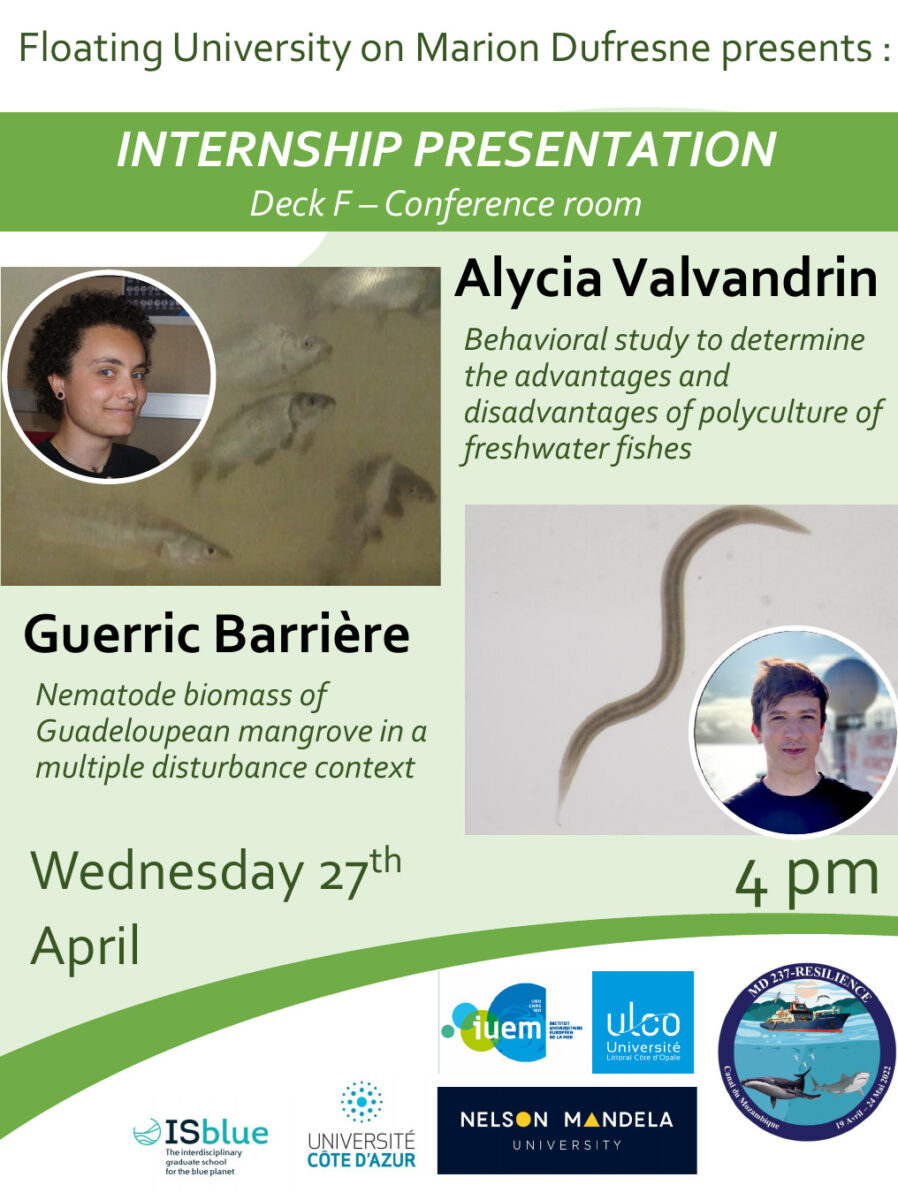
April 27th, 2022, R/V Marion Dufresne, Mozambique Channel
Authors: Alycia Valvandrin, Guerric Barrière and Christophe Mocquet
Behavioral study to determine the advantages and disadvantages of polyculture of freshwater fish
Alycia Valvandrin
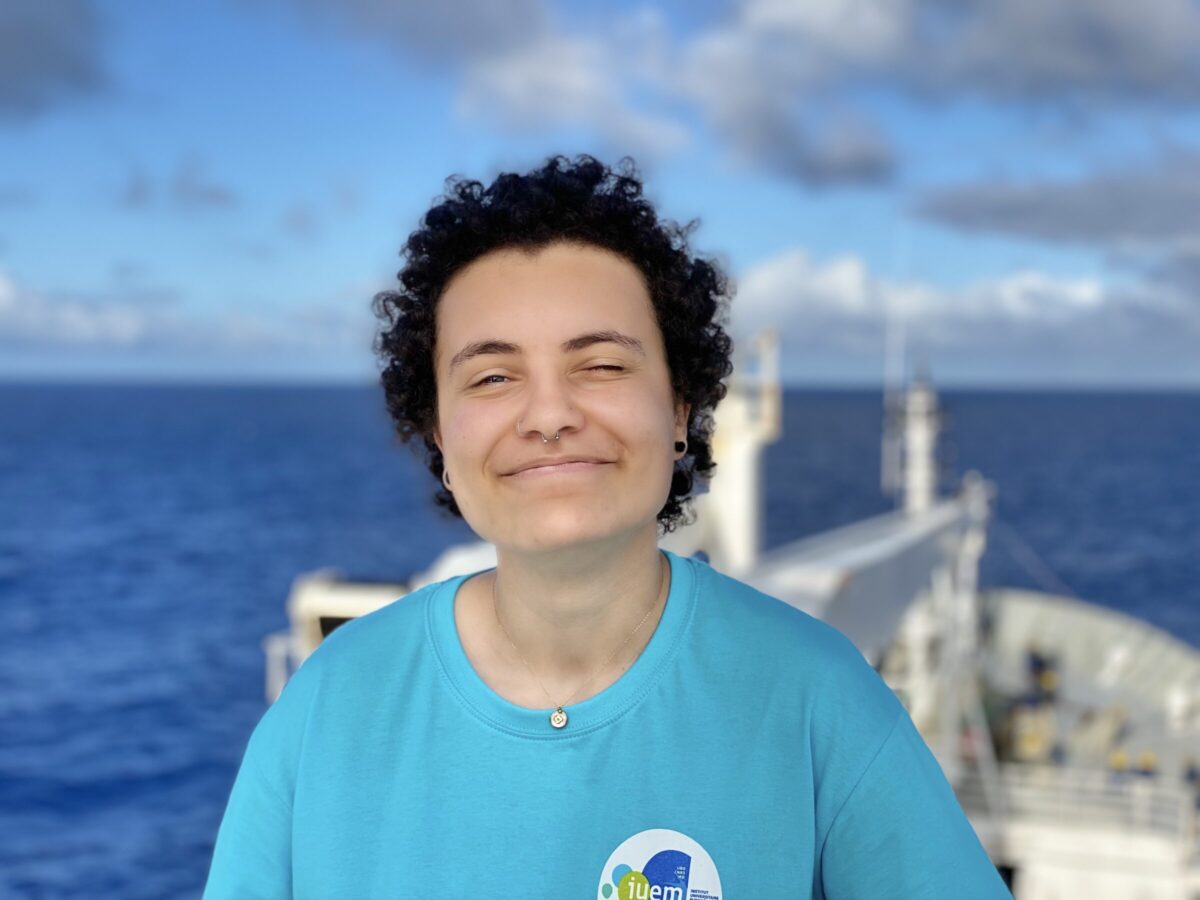
Alycia’s master internship, carried out at the Unit Research
Animal and Functionality of Animal Products (UR AFAP) in Nancy, focused on the study of the behavior of freshwater fish species raised in polyculture. In a context of growing human population and increasing food needs, this issue is particularly important because monoculture is to be reinvented. This is why this laboratory is trying to develop a model to predict which fish species could be raised together while respecting economic and ethical criteria.
Alycia studied video recordings to compare model predictions with actual observations to analyze the effect of the presence of another species on group structure and inter/intraspecific relationships. These parameters were studied through distance between individuals, height in the water column and other specific behaviors. The species of interest used in this study were common carp Cyprinus carpio, common perch Perca fluviatilis, and zander Sander lucioperca. One monoculture and two types of polyculture were conducted, with three replicates each time.


She found behavioral changes in polyculture situations between common carp and zander compared to those where they were reared alone. Perch were not highly visible but showed signs of aggression towards carp. As these results show, polyculture implies a change in group structures and inter and/or intraspecific relationships and even constraint. For further study, the laboratory will be able to cross-reference the behavioral data with physiological and biochemical stress indicators to identify the precise nature of the change. If these internal parameters are not negatively impacted, polyculture could be considered a good alternative to monoculture. With additional data, this model could meet all the criteria of good, ethical and productive fish farming.
Nematode biomass of the Guadeloupean mangrove in a context of multiple disturbances
Guerric Barrière

Guerric’s master internship, carried out at the LEMAR laboratory in Brest with Emma Michaud and Adriana Spedicato, focused on the biomass of nematodes in Guadeloupean mangroves, in different disturbance contexts. Mangroves are tropical forests known to provide many ecosystem services such as carbon sequestration, coastal protection and their role as nurseries for certain species. However, these ecosystems are threatened by human activities and climate change. Meiofauna (sediment-dwelling animals measuring between 32 and 1000 µm) can be a good indicator to monitor the status of mangroves and detect potential disturbances.
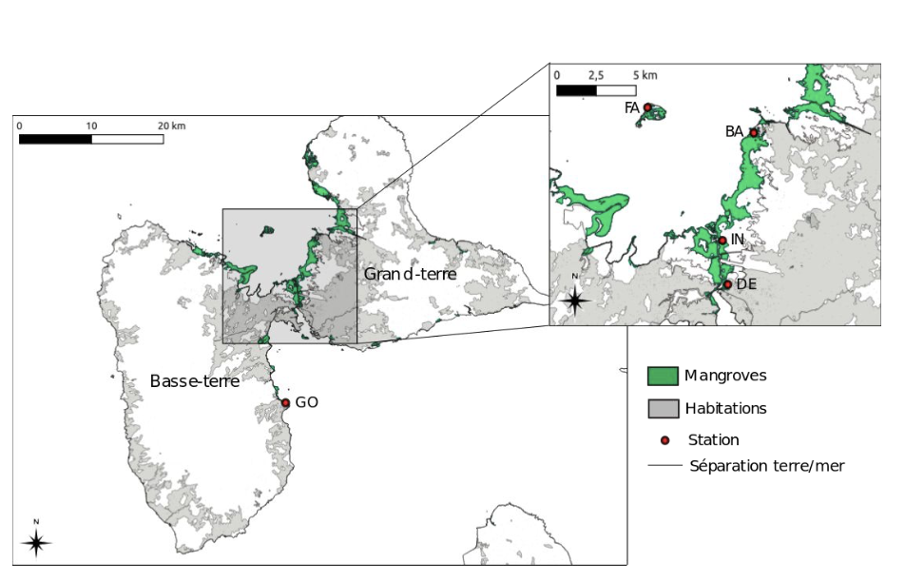
Guerric studied the biomass and abundance of nematodes in 5 stations, Babin (BA), Fajou (FA), Intermediate (IN), Décharge (DE) and Goyave (GO) under different anthropic pressures.
The GO and DE stations differ in their type of pollution: one is polluted by urban effluents (DE) while the other is located next to banana plantations (GO) where historically chlordecone has been used and persists in the sediments. Once the nematodes were fixed, he measured their length and width and deduced their biovolume from photos taken with a microscope.
Nematodes were mainly found at the surface, in the oxygenated layers. The different communities can be distinguished by their dominant genus. The De and GO stations showed very different results in terms of biomass. The smallest species were found in highly disturbed environments due to their opportunistic strategy with rapid growth, high reproductive potential but short life span. The nematode maturity index can be calculated and give insight into the degree of opportunism of the community.
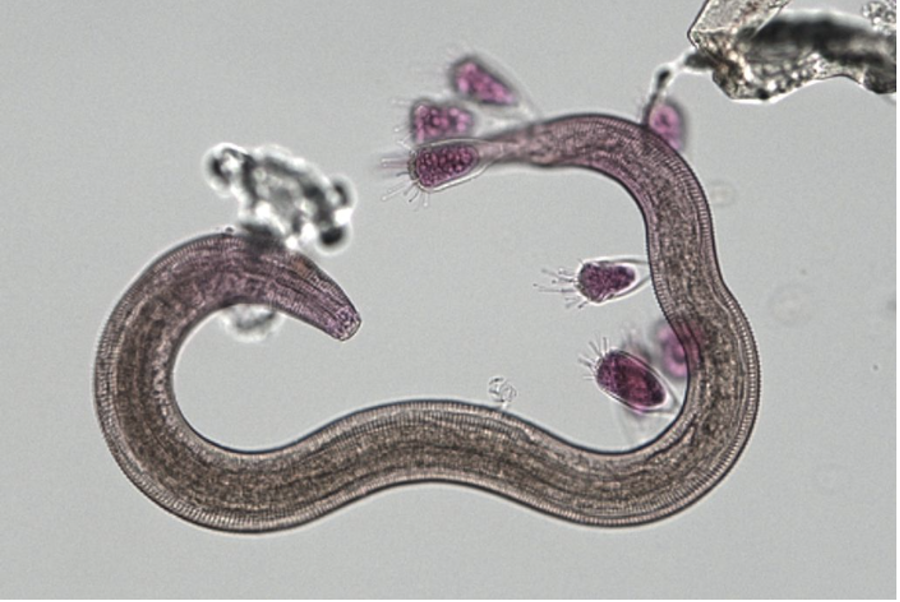
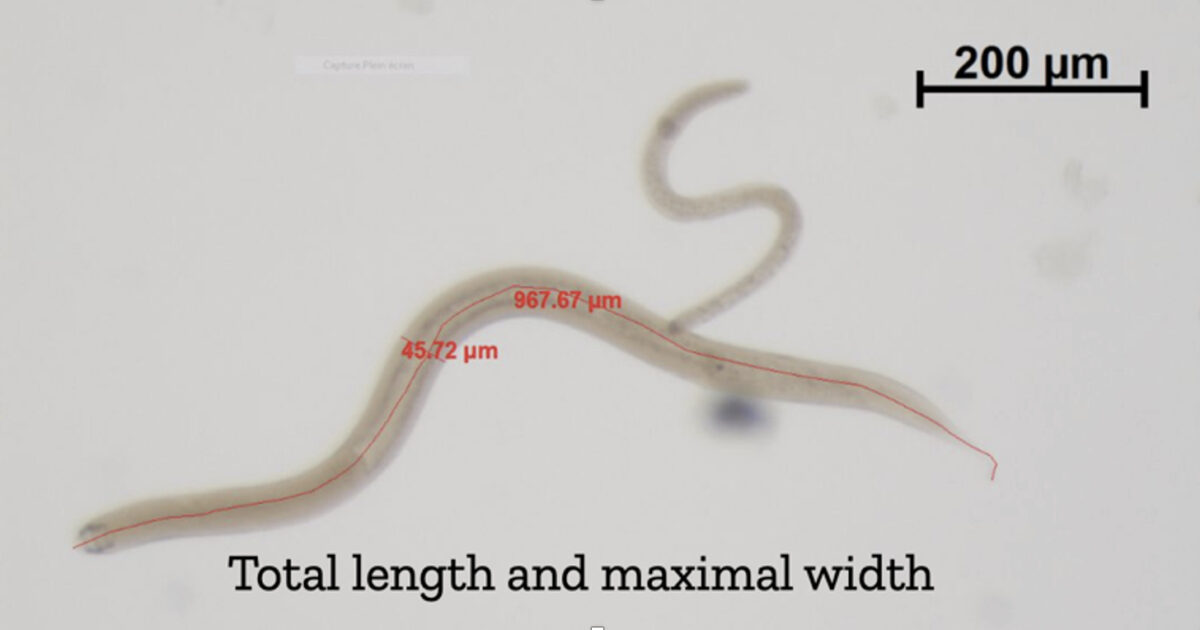
However, this method is time consuming and not very accurate because many micro-habitats may be present in each station, which implies a high variability of results. It would therefore be necessary to study a larger number of samples or to specialize in micro-habitats. Another perspective would be to link these results to environmental data such as particulate organic carbon (POC), chemical measurements of pollution as well as isotope ratios.
 Attention, vous utilisez un navigateur peu sûr !
Attention, vous utilisez un navigateur peu sûr !